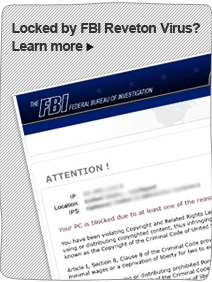“Hey, I received a “Couldn’t load XPCOM” error when running my Mozilla Firefox web browser and I can’t contact Microsoft or Mozilla or anybody. Restoring to an earlier time doesn’t work, no matter how far back I go. I’ve had to re-image my computer which scares me, especially since I don’t have a backup hard drive. Is there a safer and less time-consuming way to handle this?”

How do I get “Couldn’t load XPCOM” Error?What caused the problem?
The causes of “Couldn’t load XPCOM” Error is Mozilla releases their updates for Firefox as it gets newer features, sometimes it becomes incompatible to windows due to new features or due to other installed programs. And maybe it is not compatible with your operating system or your computer configuration, even after lots of testing it fails to be compatible with windows and related programs.
What is XPCOM? What is the relationship between XPCOM and Firefox?
XPCOM means Cross Platform Component Object Model. It is a cross-platform component model from Mozilla and making the application environment an actual framework. And it is similar to Microsoft Component Object Model (COM). XPCOM is one of the main things making the Mozilla application environment an actual framework. It is a development environment that provides the following features for the cross-platform software developer:
a. Component management
b. File abstraction
c. Object message passing
d. Memory management
This component object model makes virtually all of the functionality of Gecko available as a series of components, or reusable cross-platform libraries, that can be accessed from the web browser or scripted from any Mozilla application. Applications that must access the various Mozilla XPCOM libraries (networking, security, Document Object Model (DOM), etc.) use a special layer of XPCOM called XPConnect, which reflects the library interfaces into JavaScript, or other languages.
Manually Guides to fix “Couldn’t load XPCOM” Error
Method 1: Uninstall Mozilla Firefox completely and then reinstall it back.
Step 1: Check the Program Files folder. Delete C:\Program files\Mozilla Firefox or C:\Program Files (x86)\Mozilla Firefox.
Step 2: Double-click “my computer”, then click “Organize button”. Click folder and search options. Click “View” button. And choose Show hidden files, folders and drives. then click “OK”.
Step 3: Click “Start” button, then click “Control Panel”. Click “Uninstall a program” (on the Programs section), select the suspicious program and uninstall it.
Step 4: Open Registry by Typing in the Run box and Hit Enter Key. Find Firefox file and delete it.
“Given that Firefox could not load XPCOM, I tried to follow Forum instructions which said to completely uninstall Firefox, and then reinstall. Curiously, I was not able to uninstall Firefox, either through the Control Panel or CCleaner. Using the Control Panel, Windows would ask for permission to proceed with the uninstall and then nothing would happen. What would prevent this? What would I do if I wanted Firefox uninstalled? Any ideas on how I can uninstall it please?”
Method 2: Get into Clean Boot State.
Step 1: Press Win+R key and type “msconfig “in the search bar and run it to the System Configuration Utility.
Step 2: Click the General tab, and then click Selective Startup.
Step 3: Click the Services tab. Select the Hide All Microsoft Services check box. Now click Disable all.
Step 4: Click Apply/OK, restart the computer and go to uninstall Firefox.
Note: Complete Uninstall means you need to remove everything related to Firefox from your computer. Deleting the wrong registry keys may lead to other errors or complete system failure. Processing manual method is supposed to have a certain level of computer literacy. If you are not sure how to start and are afraid of making any critical mistakes damaging the computer system, please live chat with YooCare/YooSecurity PC professional online service now.
Published by Tony Shepherd & last updated on October 26, 2016 5:09 am












